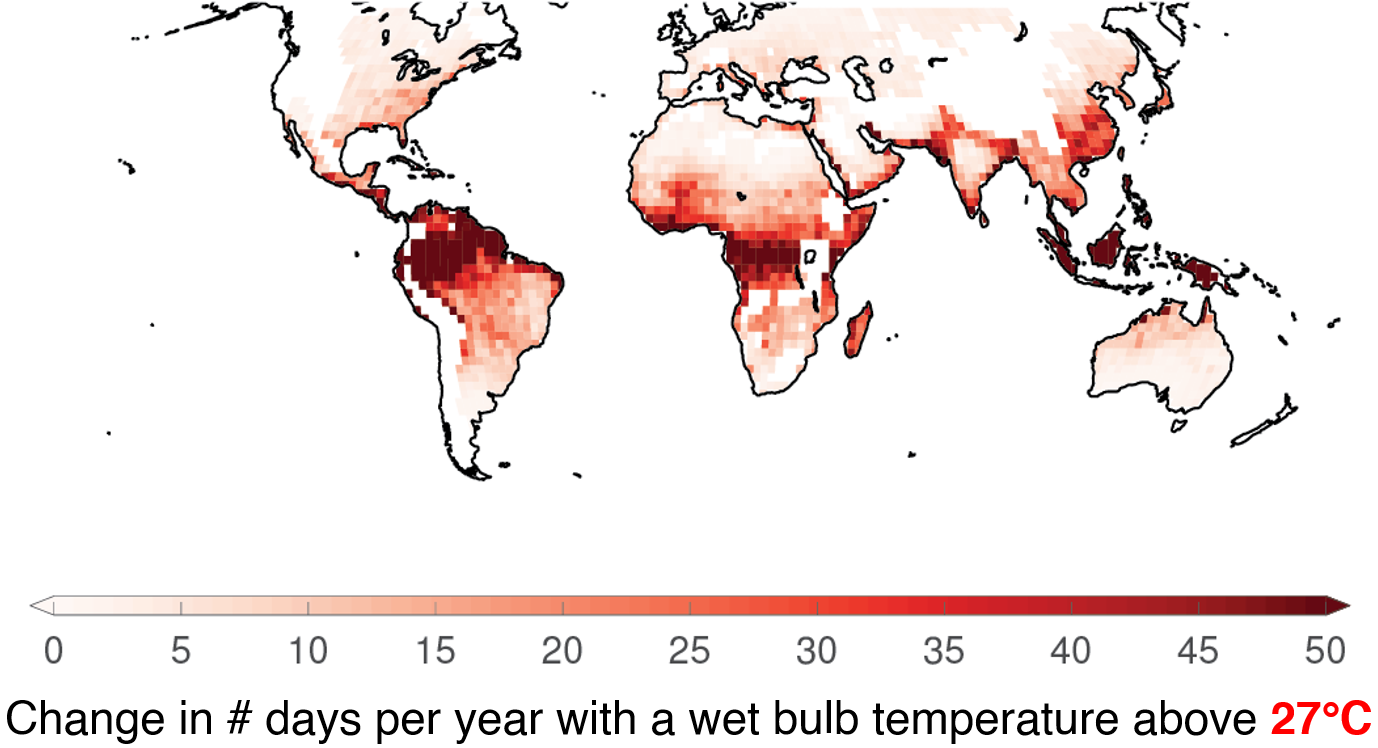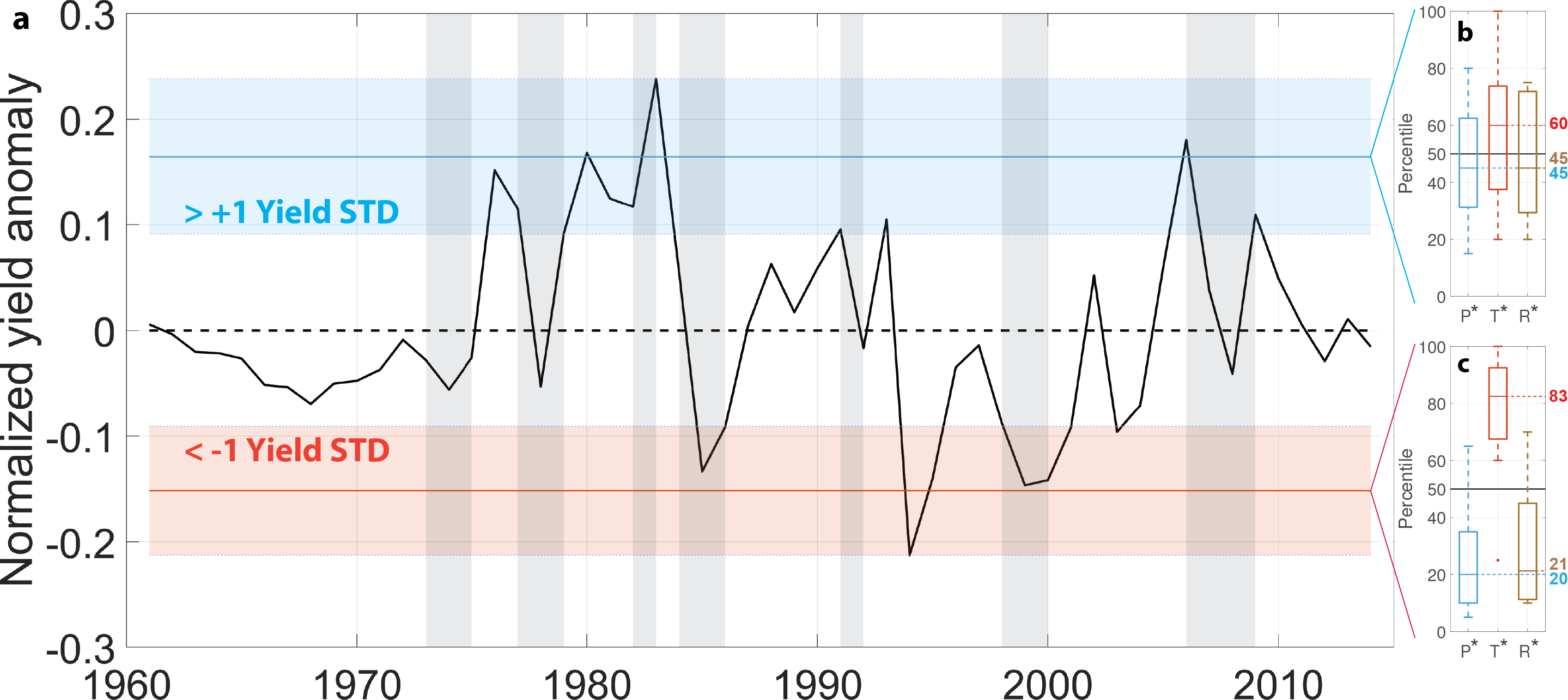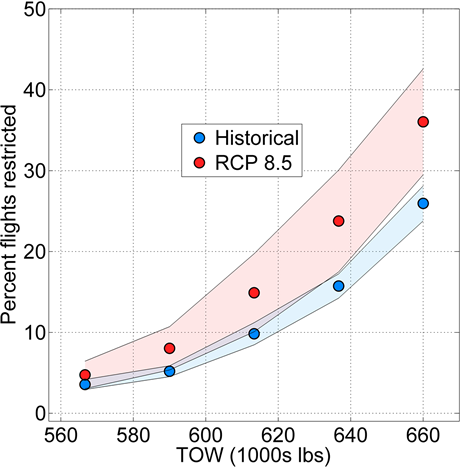We use climate observations and climate model simulations to understand how impactful climate extremes are changing and why, and what these changes mean for the human systems and natural environments that people depend on.
How will climate change affect the frequency, intensity, and duration of heat extremes? What will these changes mean for the billions of people living in already-hot regions? Extreme temperatures are already the number one weather-related killer, and as these events become more common, their impacts will likely increase.
 Heat stress in humans depends not only on the temperature but also on the humidity. We identify the most at-risk regions for heat stress, understand the dynamics that drive the most extreme events, and consider what adaptation strategies could be employed to reduce the impacts of heat. Our work has shown that in the coming decades, billions of people annually could be exposed to unprecedented heat stress, with millions potentially experiencing heat stress that approaches the limits of human tolerance if greenhouse gas emissions aren't substantially reduced.
Heat stress in humans depends not only on the temperature but also on the humidity. We identify the most at-risk regions for heat stress, understand the dynamics that drive the most extreme events, and consider what adaptation strategies could be employed to reduce the impacts of heat. Our work has shown that in the coming decades, billions of people annually could be exposed to unprecedented heat stress, with millions potentially experiencing heat stress that approaches the limits of human tolerance if greenhouse gas emissions aren't substantially reduced.
Agriculture is highly dependent on a stable climate, and climate change is disrupting the weather patterns that farmers rely on. Our work examines how extreme climate events like heat waves and droughts may affect crops in the future, and how agriculture itself can modify the local climate.
 For example: Agricultural risk is particularlly acute in the Upper Nile Basin, where hot droughts have contributed to crop failure, famine, and migration in recent decades. Our work has shown that while precipitation is projected to increase across the region, the risk of hot and dry conditions is also rising due to higher temperatures and more precipitation variability. On top of this increased risk of concurrently hot and dry conditions, population is rapidly rising across the Basin. As a result of this combination of climate and demographic change, water scarcity and the risk of crop failures are projected to rise, necessitating adaptation and preparation to avoid humanitarian crises.
For example: Agricultural risk is particularlly acute in the Upper Nile Basin, where hot droughts have contributed to crop failure, famine, and migration in recent decades. Our work has shown that while precipitation is projected to increase across the region, the risk of hot and dry conditions is also rising due to higher temperatures and more precipitation variability. On top of this increased risk of concurrently hot and dry conditions, population is rapidly rising across the Basin. As a result of this combination of climate and demographic change, water scarcity and the risk of crop failures are projected to rise, necessitating adaptation and preparation to avoid humanitarian crises.
Existing infrastructure is designed to operate within historical climatic bounds, and as these bounds shift, the risk of disrupted infrastructure operations will grow. Our work answers critical questions concerning the climate change risks to aviation and the electrical grid, and assesses how we can improve infrastructure resilience to warming.
 For example, aircraft takeoff performance is strongly dependent on temperature. As air temperature rises, air density declines, meaning that a wing produces less lift at a given speed. This requires that takeoff speeds be higher on hotter days; for a given airport and aircraft type, there is a threshold above which the airplane cannot takeoff at its maximum takeoff weight and must be weight restricted. We have shown that as temperatures warm, more frequent weight restrictions may result in significant economic cost to the aviation industry.
For example, aircraft takeoff performance is strongly dependent on temperature. As air temperature rises, air density declines, meaning that a wing produces less lift at a given speed. This requires that takeoff speeds be higher on hotter days; for a given airport and aircraft type, there is a threshold above which the airplane cannot takeoff at its maximum takeoff weight and must be weight restricted. We have shown that as temperatures warm, more frequent weight restrictions may result in significant economic cost to the aviation industry.